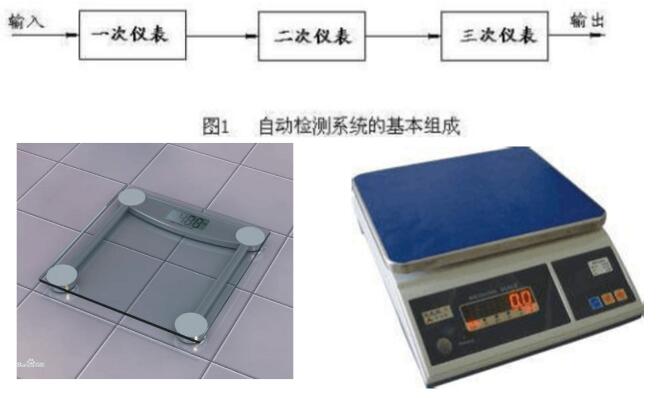A sensor (English name: transducer/sensor) is a detection device that can sense the measured information and transform the sensed information into electrical signals or other required forms of information output according to certain rules, in order to meet the requirements of information transmission, processing, storage, display, recording, and control. It is the primary link to achieve automatic detection and control. People must rely on sensory organs in order to obtain information from the outside world. However, relying solely on people's own sensory organs is not enough to study natural phenomena and laws, as well as their functions in production activities. To adapt to this situation, sensors are needed. Therefore, it can be said that sensors are an extension of the human five senses, also known as the electrical five senses.
There are many classifications of sensors, among which
Load CellIt is a force that can convert gravity into electrical signals; The electrical conversion device is a key component of electronic scales. According to the conversion method, weighing sensors are divided into 8 types: photoelectric, hydraulic, electromagnetic, capacitive, magnetic pole change, vibration, gyroscope, and resistance strain. The resistance strain type is the most widely used. Sensors are like electronic scales; Heart;, Its accuracy and stability directly affect the performance of electronic scales.
Electronic scales are a type of weighing instrument that uses Hooke's law or the principle of lever balance of force to measure the mass of an object. With the development of modern production, electronic scales have become indispensable measuring tools in many commercial activities. The electronic scale mainly consists of three parts: a load-bearing system (such as the scale pan and scale body), a force transmission and conversion system (such as the lever force transmission system and sensors), and a display system (such as a dial and electronic display instrument).
As a typical automatic detection system, electronic scales can also be summarized into three major components.

As shown in Figure 1, a primary instrument usually refers to a sensor, which is composed of sensitive components, circuits, mechanisms, etc. It uses certain special materials to have certain sensitivity to certain physical quantities, and then converts them into electricity, voltage, and current. Usually, the electrical signal from the primary instrument is relatively weak and insufficient to drive the display. Therefore, secondary instruments are used to amplify the signal. The electrical signal from the primary instrument often carries external interference signals, which must be removed. Generally, secondary instruments also include filtering circuits to eliminate interference. The conversion relationship of sensors often does not follow a linear relationship, so it is sometimes necessary to perform appropriate linear compensation processing. Therefore, it is called a secondary instrument as a measurement and display component. The output signal of the secondary instrument may be analog or digital. The tertiary instrument adopts computer technology, so it is required that the output signal of the secondary instrument must be a digital signal. The tertiary instrument will further process the signal and form a control output. As a small-scale instrument system, the tertiary instrument mainly consists of digital circuits with a central processing unit as the core, forming an intelligent instrument. Greatly improve the performance and functionality of the entire measurement system.
The instrument structures of various forms of electronic scales are similar and must use weighing sensors to collect weight signals and transform them into corresponding electrical signals.
2. Working principle of electronic scale
When an object is placed on the scale, pressure is applied to the sensor, which deforms, causing impedance to change. At the same time, the excitation voltage is used to change and output a simulated signal of change. The signal is amplified and output to an analog-to-digital converter through an amplification circuit. Convert into easily processed digital signals and output them to the CPU for operational control. The CPU outputs this result to the monitor based on keyboard commands and programs until the result is displayed.
3. Selection of sensors in electronic scales
① Sensitive components
A component that directly senses the measured (quality) and outputs other quantities that have a definite relationship with the measured. The elastic body of a resistance strain type weighing sensor converts the mass of the measured object into deformation; The elastic body of a capacitive weighing sensor converts the measured mass into displacement.
② Transformation element
Also known as a sensing element, it converts the output of the sensing element into a signal that is easy to measure. The resistance strain gauge (also known as resistance strain gauge) of a resistance strain type weighing sensor converts the deformation of the elastic body into a change in resistance; The capacitor of a capacitive weighing sensor converts the displacement of the elastomer into a change in capacitance. Sometimes certain components have the functions of both sensitive and transformation components. The piezoelectric material of a voltage type weighing sensor, under the action of an external load, outputs electrical energy while undergoing deformation.
③ Measuring element
Transforming the output of the transformation element into electrical signals provides convenience for further transmission, processing, display, recording, or control. For example, the bridge circuit in resistance strain type weighing sensors and the charge preamplifier in piezoelectric weighing sensors.
④ Auxiliary power supply
Provide energy for the electrical signal output of the sensor. Generally, weighing sensors require an external power supply to operate. Therefore, as a product, it is necessary to indicate the requirements for power supply, but not as a component of the weighing sensor. Some sensors, such as magnetoelectric speed sensors, can operate normally without the need for auxiliary power due to their high output energy. So not all sensors need to have an auxiliary power supply.
(2) Measurement principle and construction principle of weighing sensors
Measurement principle: The weighing sensor uses a metal resistance strain gauge to form a measurement bridge circuit. It uses the principle that the metal resistance wire elongates and becomes thinner under tension, and the resistance increases. This is the effect of the metal resistance changing with the strain applied (strain is the change in size).
Construction principle: Metal resistors have the property of obstructing the flow of current, that is, they have resistance (Ω), and their resistance values vary depending on the type of metal. Generally speaking, the thinner the same type of metal wire, the greater its resistance value. When a metal resistance wire is subjected to external force and expands, its resistance value will increase or decrease within a certain range. Therefore, if the metal wire (or film) is tightly attached to the object being tested, and the wire or film is very thin or thin, and the adhesion is very perfect, then when the object being tested is stretched and stretched by external force, the metal resistance wire (film) will also expand and contract proportionally, and its resistance value will also change accordingly. The weighing sensor is used to measure the weight signal by pasting a metal resistance strain gauge onto a metal weighing beam.
(3) Selection of weighing sensors
Ability to achieve force→ There are various types of weighing sensors for electrical conversion, including resistance strain sensors, electromagnetic force sensors, and capacitance sensors. Resistance sensors can be divided into metal wire foil type and semiconductor type, each of which has its advantages, disadvantages, and usage range.
Most electronic scales are used in extremely ordinary indoor and outdoor atmospheric environments, with so-called temperature conditions ranging from -10 ℃ to 55 ℃. Choosing a metal foil strain gauge sensor as the load sensor for electronic scales is the most widely used application. Because metal foil strain gauges have advantages such as high accuracy, good stability, linearity, simple conversion circuit, and low cost within this temperature range. Although semiconductor strain gauges can also be applied and have many advantages, such as high sensitivity, small size, and fast response speed, their sensitivity to temperature has always been a drawback. Although temperature compensation has been solved through laser repair technology, high production costs have become an obstacle to widespread use. Capacitive load sensors are also an optional object, but require a stable AC power supply as the working power source, which has high technical requirements, complex circuits, and is suitable for situations with small installation space and fast response speed. Piezomagnetic load sensors are particularly suitable for situations with high ambient temperatures, but their accuracy is not high and they are only suitable for large tonnage scales. The basic requirements for selecting a load sensor are: high sensitivity, linear functional relationship, good repeatability, and long-term stability.

As shown in the figure, there are three common strain gauge load sensors. Figure a shows a cylindrical load sensor with elastic components made of alloy steel material. Figure b shows a beam type load sensor with elastic components made of spring steel material. Figure c shows an S-type shear load sensor with an elastic element made of aluminum alloy material. The three structural forms of load sensors are all compression type, and materials with different elastic moduli are used according to the needs of the measurement range. Usually, the measurement range and resolution of load sensors are mutually constrained, and the larger the measurement range, the poorer the resolution. On the contrary, the smaller the measurement range, the better the resolution.
4. The application of sensors in electronic scales
The resistance strain type weighing sensor is based on the principle that an elastic body (elastic element, sensitive beam) undergoes elastic deformation under external force, causing the resistance strain gauge (conversion element) attached to its surface to also deform. After the deformation of the resistance strain gauge, its resistance value will change (increase or decrease), and then the corresponding measurement circuit will convert this resistance change into an electrical signal (voltage or current), Thus completing the process of converting external forces into electrical signals.
5. Classification of electronic scales
(1) According to principle: electronic scale, mechanical scale, electromechanical combination scale, multifunctional electronic scale;
(2) Classified by function: counting scale, pricing scale, weighing scale, Bluetooth scale;
(3) Classified by purpose: industrial scale, commercial scale, special scale;
(4) Classification by placement location:
Table scale refers to an electronic scale that weighs less than 30Kg;
Platform scale refers to an electronic scale with a full weighing range of 30-300Kg;
Weighbridge refers to an electronic scale precision balance with a full weight of over 300Kg;
(5) Classified by accuracy:
Level I: Precision of special balance≥ 1/100000 reference scale;
Level II: high-precision balance 1/10000; Precision< 1/100000 precision weighing instrument;
Level III: Medium precision balance 1/1000≤ Precision< 1/10000 industrial and commercial weighing instruments;
Level IV: Ordinary scale 1/100≤ Precision< 1/1000 coarse scale;
(6) Classification by data transmission method:
Divided into: RS-232/RS-485, RF (RF2.4G), Analog (Analog), Bluetooth (Bluetooth), USB interface, Ethernet.


